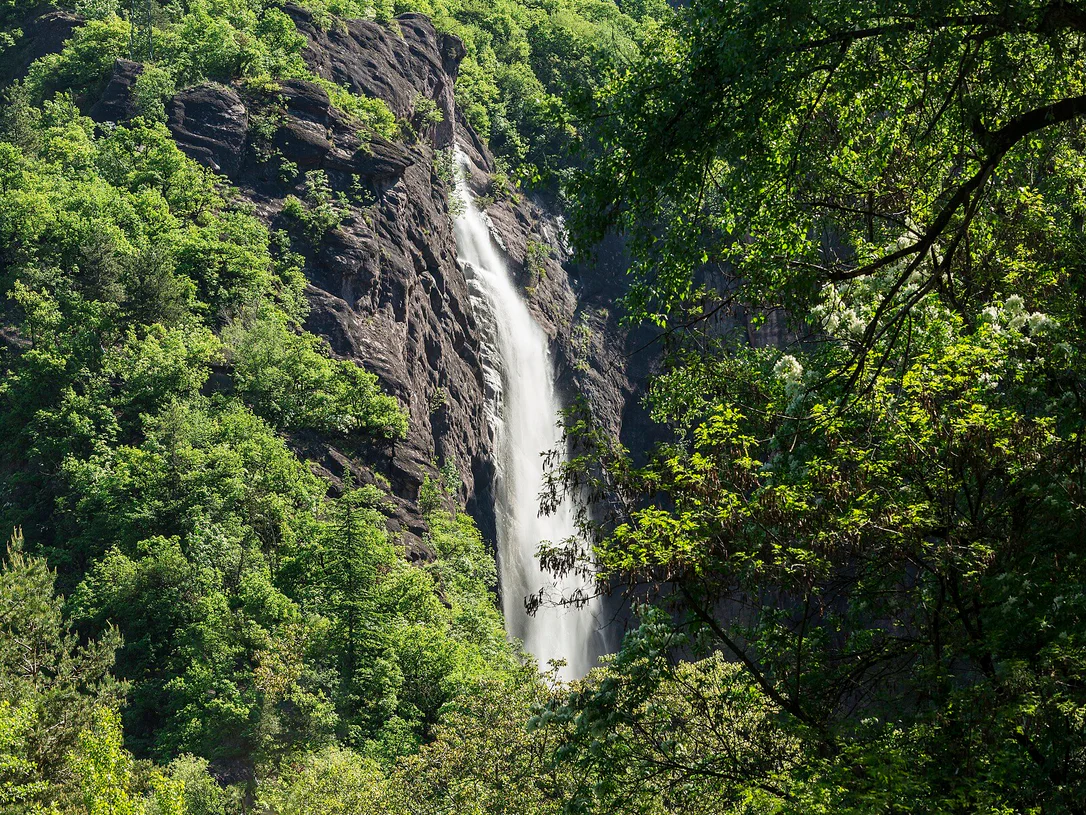Pfarrkirche Maria Königin
Bereits in die erste Hälfte des 19. Jahrhunderts erkannte man, bedingt durch die entstandene Wallfahrt zum – Großen Herrgott von Agums – einer- und den stetigen Bevölkerungs-Zuwachs andererseits, die Notwendigkeit eines größeren Kirchenraumes. Ein erster Wegbereiter dieses Gedankens war der in Prad geborene, Herr Kaspar Unterkircher (6.1.1775 + 14.9.1836) Dr. Philosophie, Weltpriester und Prof. der Theologie am Priesterseminar zu Trient. Sein Plan, die Sankt Johann-Kirche zu vergrößern, zu dem er 1835 der Pfarrei Agums/Prad testamentarisch 6.734 Gulden Reichs-Währung vermachte und damit einen Kirchenbaufond ins Leben rief, wurde nicht realisiert. Der Vorschlag scheiterte sowohl an der dezentralen Lage der Skt.-Johann-Kirche, als auch am bereits vorhandenen Ansinnen eines völligen Kirchenneubaues von Seiten der Gemeindeväter. Doch dazu reichten Baupläne und ausgemachte Bauplätze alleine nicht aus. Es bedurfte vor allem Geldmittel und die waren besonders in Prad-Agums zurzeit des wirtschaftlichen Niedergangs, mehr als rar. Der veramtlichte Kirchenbaufond erzwang zwar aus der größtenteils armen Bevölkerung, die Herausgabe des letzten Scherfleins, aber an eine Kirchenbau–Verwirklichung konnte trotz allem nicht gedacht werden. Erst als das Fondkapital schließlich im Jahre 1880 die Summe von 20.000 Gulden erreicht hatte, ließ Pfarrer Alois Eller (1874 eingesetzt) von Landesoberingenieur Anton Geppert den Plan für einen Kuppel-Kirchenbau anfertigen. Dessen Bauplatz auf den „Theinen-Wiesen“ vorgesehen war. Jedoch fand die Bevölkerung diesen Ort inakzeptabel; es entbrannte eine heftige Agitation dagegen, sodass das mit 27.000 Gulden veranschlagte Vorhaben am Wiederstand der Gläubigen, platzte. 20 Jahre vergingen, bis der neue Pfarrherr Johann Josef Schöpf um 1900 in jugendlichem Eifer den Kirchenbaugedanken wiederum auf griff. Seine erste Sorge, einen passenden Bauplatz zu finden, konnte nach einigen Fehlschlägen erörtert werden. Es fand sich ein Baugrund von allgemeiner Akzeptanz im Dorf; der schließlich angekauft wurde. Architekt Peter von Stadl aus Hall in Tirol wurde dann 1913 mit der Ausarbeitung eines neuen Planes beauftragt. Es sollte ein neugotischer, dreischiffiger Bau werden, der auch einem künftigen Einwohnerzuwachs Rechnung tragen würde. Der Baubeginn sollte mit dem Frühjahr 1915 starten. Leider wurde dies durch den Kriegsausbruch mit Italien, vereitelt. Das auf 150.000 Kronen angewachsene Fondkapital wurde, in der Hoffnung durch Kursgewinn und Zinszuwachs, als Kriegsanleihe gezeichnet und ging, gleich dem Krieg, 1918/19 verloren. Die Einrichtung des Kirchenbaufonds blieb als solche zwar bestehen, aber man stand unerwarteter Dinge vor einem Nichts. In der folgenschweren Zeit von 1920 – 1945, die geprägt war von Annexion, Faschismus, Option, Arbeitslosigkeit und dem 2. Weltkrieg, unterblieb vorerst jegliches Bestreben nach einem Kirchenbau. Aber Pfarrer Josef Rainalter (eingesetzt 1935) wurde in den Nachkriegsjahren mehr denn je mit der akuten Notwendigkeit eines Kirchenbaus konfrontiert. Darum ließ er in seinen Bestrebungen, eine erste konkrete Tat zu setzen, nicht locker und so gelang ihm bereits 1950 der Kauf eines entsprechenden Baugrundes, den er mit der Abfindungssumme der Gemeinde, für die ehemalige Kinderbewahranstalt, bezahlte. Damit war ein erster fundamentaler Schritt, hin zu einem endgültigen Kirchenbau-Vorhaben, gesetzt.



























































